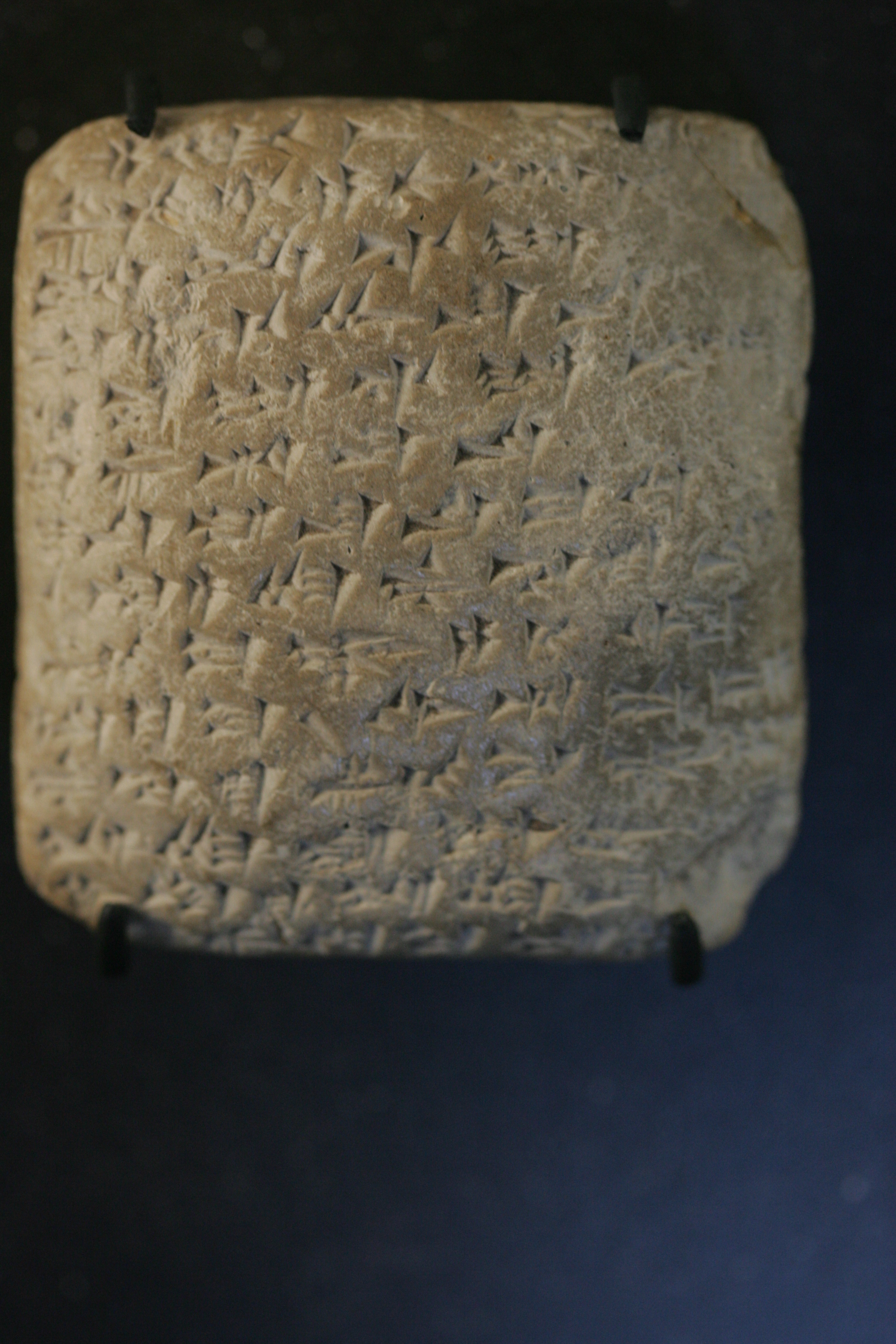|
Amarna Letter EA256
Amarna letter EA 256, in short EA 256, catalogued under the title ''Oaths and Denials'', is one of a total of about 350 so-called Amarna letters, belonging to an official correspondence dating to the mid-14th century BC (about 1350 BC till 20–25 years later). The initial corpus of letters were found at Akhenaten's city Akhetaten, on the floor of the Bureau of Correspondence of Pharaoh; others were later found, adding to the body of letters. Description EA 256 is a square, mostly flat clay tablet letter written on both sides; it is also written on the bottom, top (=bottom of ''reverse'' side), and the last 3 lines are written on the left edge (obverse), where the start of lines on the obverse form a 'straight' margin. The reverse of the letter (see Rohl), has a list of towns in, or associated with the Golan Heights. The surface of the letter is rough (partially eroded?), or photos of the reverse especially, do not easily highlight the cuneiform characters. The topic of the le ... [...More Info...] [...Related Items...] OR: [Wikipedia] [Google] [Baidu] |
Amarna Letter Mp3h8876
Amarna (; ) is an extensive ancient Egyptian archaeological site containing the ruins of Akhetaten, the capital city during the late Eighteenth Dynasty. The city was established in 1346 BC, built at the direction of the Pharaoh Akhenaten, and abandoned shortly after his death in 1332 BC. The site is on the east bank of the Nile River, in what today is the Egyptian province of Minya. It is about south of the city of al-Minya, south of the Egyptian capital, Cairo, and north of Luxor (site of the previous capital, Thebes). The city of Deir Mawas lies directly to its west. On the east side of Amarna there are several modern villages, the chief of which are l-Till in the north and el-Hagg Qandil in the south. Activity in the region flourished from the Amarna Period until the later Roman era. Name The name ''Amarna'' comes from the Beni Amran tribe that lived in the region and founded a few settlements. The ancient Egyptian name means " the horizon of the Aten".David (1998), ... [...More Info...] [...Related Items...] OR: [Wikipedia] [Google] [Baidu] |
Pharaoh
Pharaoh (, ; Egyptian language, Egyptian: ''wikt:pr ꜥꜣ, pr ꜥꜣ''; Meroitic language, Meroitic: 𐦲𐦤𐦧, ; Biblical Hebrew: ''Parʿō'') was the title of the monarch of ancient Egypt from the First Dynasty of Egypt, First Dynasty () until the Roman Egypt, annexation of Egypt by the Roman Republic in 30 BCE. However, the equivalent Egyptian language, Egyptian word for "king" was the term used most frequently by the ancient Egyptians for their monarchs, regardless of gender, through the middle of the Eighteenth Dynasty during the New Kingdom of Egypt, New Kingdom. The earliest confirmed instances of "pharaoh" used contemporaneously for a ruler were a letter to Akhenaten (reigned –1336 BCE) or an inscription possibly referring to Thutmose III (–1425 BCE). In the early dynasties, ancient Egyptian kings had as many as ancient Egyptian royal titulary, three titles: the Horus name, Horus, the prenomen (Ancient Egypt), Sedge and Bee (wikt:nswt-bjtj, ''nswt-bjtj''), and ... [...More Info...] [...Related Items...] OR: [Wikipedia] [Google] [Baidu] |
Tell Ashtara
Tell Ashtara () is an archaeological mound south of Damascus. The Bronze Age city that once stood here may have been mentioned in the Amarna letters correspondence of 1350 BC as Aštartu, and is usually identified with the Biblical city of Ashtaroth. Aštartu in Egyptian texts Aštartu is only referenced in two of the 382-letter Amarna corpus, in letters EA 256 and EA 197 (EA stands for 'el-Amarna'). EA 197 is catalogued as ''"Biryawaza's plight"''. Biryawaza was the mayor of Damascus, called ''Dimasqu'' in the letters' Akkadian. EA 256 is a story concerning Mutbaal, the son of Labaya, and the Habiru, in regard to the whereabouts of Ayyab, who may be in Pihilu, modern day Pella, Jordan, and is a letter of intrigue, catalogued as ''"Oaths and denials"'', and lists 7 cities located in the Golan area. Ayyab was the king of Aštartu. He authored of one surviving letter to the Egyptian pharaoh, listed as EA 364. Aštartu is mentioned in the Annals of Thutmose III at the Tem ... [...More Info...] [...Related Items...] OR: [Wikipedia] [Google] [Baidu] |

